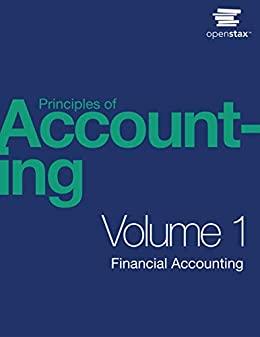Question
Biscayne International Inc. (A Wholly-Owned Subsidiary of Motorworks, Inc.) Statement of Income For the Year Ended December 31, Year 2 Sales CHF 30,000,000 Cost of
Biscayne International Inc.
(A Wholly-Owned Subsidiary of Motorworks, Inc.)
Statement of Income
For the Year Ended December 31, Year 2
|
|
|
| |||||
| Sales | CHF 30,000,000 |
| |||||
| Cost of goods sold | (18,000,000) |
| |||||
| Selling and administrative expense | (6,000,000) |
| |||||
| Depreciation expense | (2,000,000) |
| |||||
| Income taxes | (1,200,000) |
| |||||
| Net income | CHF 2,800,000 |
| |||||
|
Statement of Retained Earnings For the Year Ending December 31, Year 2
Add: Net Income 2,800,000 Less: Dividends (500,000)
Balance Sheet December 31, Year 2
|
| ||||||
| Cash | CHF 4,800,000 |
| |||||
| Accounts Receivable | 2,000,000 |
| |||||
| Inventory | 8,000,000 |
| |||||
| Machinery and Equipment | 20,000,000 |
| |||||
| Less: accumulated depreciation | (4,000,000) |
| |||||
| Total Assets | CHF 30,800,000 |
| |||||
|
|
|
| |||||
| Current liabilities | CHF 4,000,000 |
| |||||
| Long-term debt | 8,000,000 |
| |||||
| Contributed capital | 16,000,000 |
| |||||
| Retained earnings | 2,800,000 |
| |||||
| Total Liabilities and Stockholders Equity | CHF 30,800,000 |
| |||||
----------------------------------------------------------------------------------------------------------------------
Background
As the Controller for Motorworks, Inc., your team is preparing the Companys consolidation of financial statements as of December 31, Year 2. You just received the Year 2 financial statements for Biscayne International Inc., a wholly-owned subsidiary based in Zurich, Switzerland. Biscaynes financial statements for Year 2 are denominated in Swiss Francs (CHF) and are presented above.
Motorworks, Inc. acquired Biscayne for CHF 16,000,000 on January 1, Year 1 (two years ago) when the exchange rate was $0.98. Biscayne borrowed CHF 8,000,000 on January 5, Year 1 when the exchange rate was $0.95 and immediately purchased Machinery and Equipment for CHF 20,000,000. Machinery and Equipment is depreciated on a straight-line basis using a ten-year life.
On January 1 Year 2, the inventory balance was CHF 6,000,000 and was acquired on December 15, Year 1 when the exchange rate was $1.02. Purchases of inventory during Year 2 were made uniformly throughout the year. The December 31, Year 2 ending inventory of CHF 8,000,000 was acquired evenly throughout the fourth quarter of Year 2 when the average exchange rate was $0.83.
Dividends of CHF 500,000 were declared and paid on December 15, Year 2 when the exchange rate was $0.85.
Additional exchange rates during Year 2 are as follows:
January 1 $1.00
Average 0.90
December 31 0.80
1. Assume that CHF is the functional currency. Translate (remeasure) Biscaynes financial statements into U.S. dollars at December 31, Year 2. (Also, assume that the December 31, Year 1 retained earnings that appeared in Biscaynes translated (remeasured) financial statements was $550,000).
2. Assume that the U.S. Dollar is the functional currency. Translate (remeasure) Biscaynes financial statements into U.S. dollars at December 31, Year 2. (Also, assume that the December 31, Year 1 retained earnings that appeared in Biscaynes translated (remeasured) financial statements was $950,000).
3. Explain why the translation adjustments in No.1 and No.2 above are positive or negative. Your response should include the relationship between net asset/liability exposures and movements in FX rates as we illustrated in class.
4. Calculate and present the following ratios for Biscayne at December 31, Year 2 using (a) the original CHF-denominated financial statements, (b) the U.S.-dollar financial statements in No. 1 above, and (c) the U.S.-dollar financial statements in No. 2 above:
- Current Ratio
- Total Liabilities to Total Equity
- Profit Margin (Net Income/Sales)
What relationships are apparent in these calculations? In other words, which method (Current or Temporal) provides results that are more consistent with ratios calculated using the foreign currency? (Briefly explain).
Step by Step Solution
There are 3 Steps involved in it
Step: 1

Get Instant Access to Expert-Tailored Solutions
See step-by-step solutions with expert insights and AI powered tools for academic success
Step: 2

Step: 3

Ace Your Homework with AI
Get the answers you need in no time with our AI-driven, step-by-step assistance
Get Started


